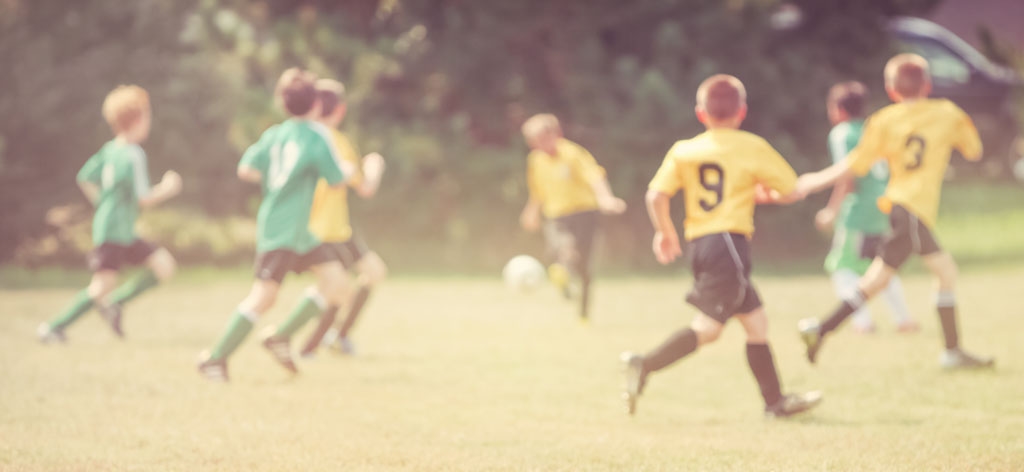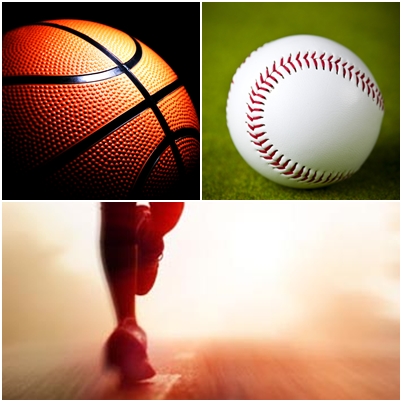
We control 95% of our physical activity with eyesight, and visual stimuli initiate motion in the body. Therefore, identifying children’s problems with vision and choosing the best method of vision correction is very important when it comes to a child’s enjoyment of physical activity. Optimum vision correction, even as low as 0.25 D can improve performance in sports. The correction of a small amount of astigmatism (from 0.5 cylinder) can also have positive effects. Keep in mind that if children wear glasses when playing certain games, for example (badminton, volleyball, basketball and football) they risk injury to the face and eyes. Hence the choice of appropriate sports activities is crucial:
– When there is a risk of retinal detachment in cases where: there was a retinal detachment in one eye; there is a family history of retinal detachment; retinal degeneration has been detected; there are signs of degenerative myopia (incorrect eyeball length, which is accompanied by progressive thinning and degeneration of the retina); the eye has been through a trauma, for example was hit by a ball; or subluxation of the lens has been confirmed – it is recommended to avoid sports where a ball is involved, or sport requiring the effort of tightening the muscles of the upper body, which causes a significant increase in pressure (as in lifting weights);
– If defects in the visual field are found (degenerative or dystrophic diseases of the retina) or there is a limitation of the field of view (as in advanced glaucoma) it is not advisable to play sports where a ball is involved. Difficulty in noticing approaching objects could expose the child to risk of injury.
– Illnesses that require special care and diseases of the eye resulting in the development of abnormal blood vessels – in these cases, the choice of activity should be consulted upon with a specialist.
Unfortunately poor vision makes it difficult to practice martial arts. Training, for example, in karate or boxing, because of the high contact involved, is impossible to do with glasses, and contact lenses can be dangerous. Similarly, dangers are present for children with poor eyesight in the case of disciplines requiring high dynamic activity, such as tennis, team games, or even skating. Opticians do not recommend swimming while wearing contact lenses because it can cause an infection of the cornea. Fortunately, there are a variety of innovative accessories dedicated to the “four-eyes” children who enjoy sports, including water sports enthusiasts – there are for example, special goggles fitted with contact lenses.

Regular activity and exercise have a positive effect and improve blood circulation and the supply of blood to all organs including the vessels of the eye. Children and young adults with eyesight problems should participate in physical education because it is one of the ways to reduce the fragility of capillaries and improve the quality of vision by:
– intensifying blood supply to the eye (the retina, choroid, optic nerve)
– stimulating the production of rhodopsin (a pigment chemical compound responsible for better vision in the dark)
It’s a fact that physical activity among young people reduces the intraocular pressure. Both, one time, as well as systematic and dynamic activity lowers intraocular pressure, but to maintain the effect, it is necessary to regularly play sport. Regular physical activity through normalization of blood pressure, improve metabolism of carbohydrates and fats, lower blood cholesterol and reduces the risk of ophthalmic diseases such as: a diabetic retinopathy, a blood clot, a central retinal vein obstruction, an ischemic nephropathy of optic nerve.
Our foundation treats as a priority promoting orthoptic activities, conducting exercises with children and we want you to know, that there’re no other vision dysfunctions than the sight defects that hinder normal life of the youngest. The Foundation primarily examines children, who hasn’t been diagnosed with vision problems, but some dysfunctions of the eye were found. It can be: the failure of the convergence, hidden or visible strabismus. These dysfunctions, which aren’t visually impaired can hinder learning abilities, overall functioning, and often be confused with dyslexia. Our orthoptic exercises conducted on different devices are carried out by a qualified orthoptists. They intend to exercise the muscle of the eye. It can result in significant improvement in vision abnormalities, or even eliminate the above mentioned dysfunctions completely.


THE KEYWORDS: physical activity and eyesight, eyesight, eyes, spatial vision, sports, activity, rhodopsin, blood pressure, advanced glaucoma, degenerative myopia, field of view, degenerative or dystrophic diseases of the retina, vision correction, The Sight Of Tomorrow Foundation, Warsaw, Children’s Eye Center, vision screening, othoptic diagnosis, test, vision test,
Sources:
– natemat.pl/97697,cwiczenia-sposobem-na-dobry-wzrok;
– edupress.pl/warto-przeczytac/art,358,uczen-z-wada-wzroku-na-lekcjach-wf.html;
– Artykuł Ewy Brzozowskiej „Uczeń z wadą wzroku – na lekcjach wychowania fizycznego” w najnowszym wydaniu (10/2013) „Wychowania Fizycznego i Zdrowotnego”.

Najnowsze komentarze